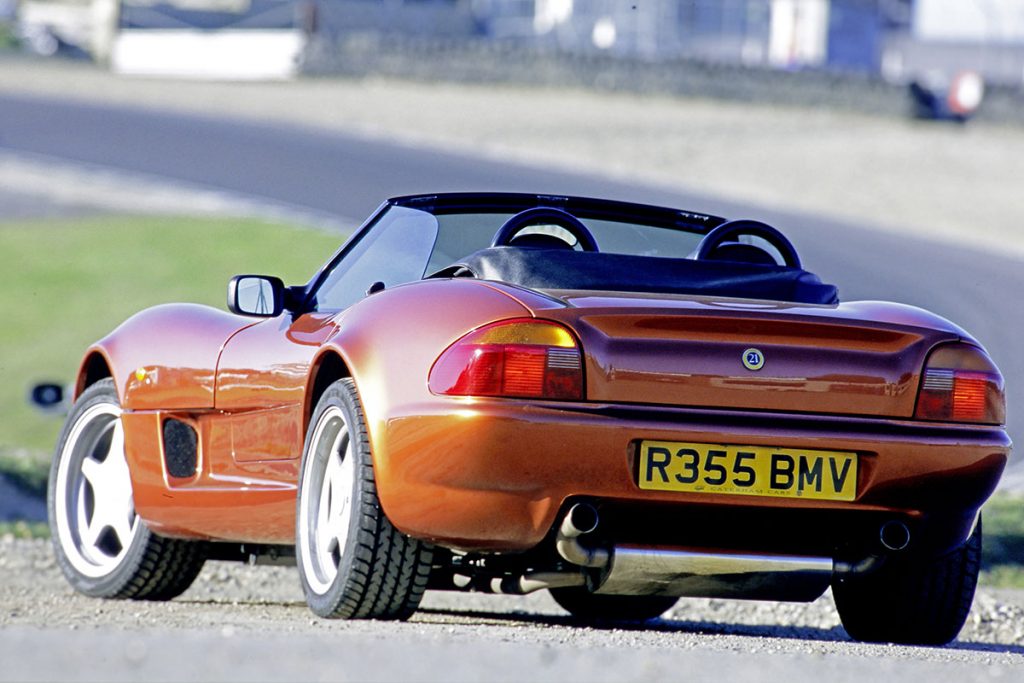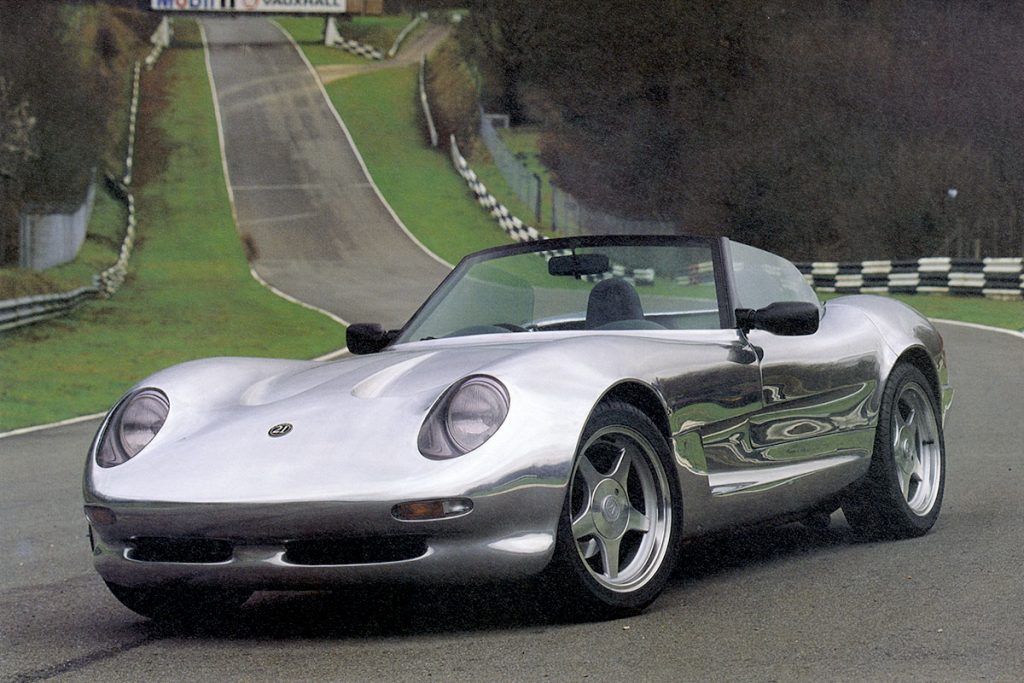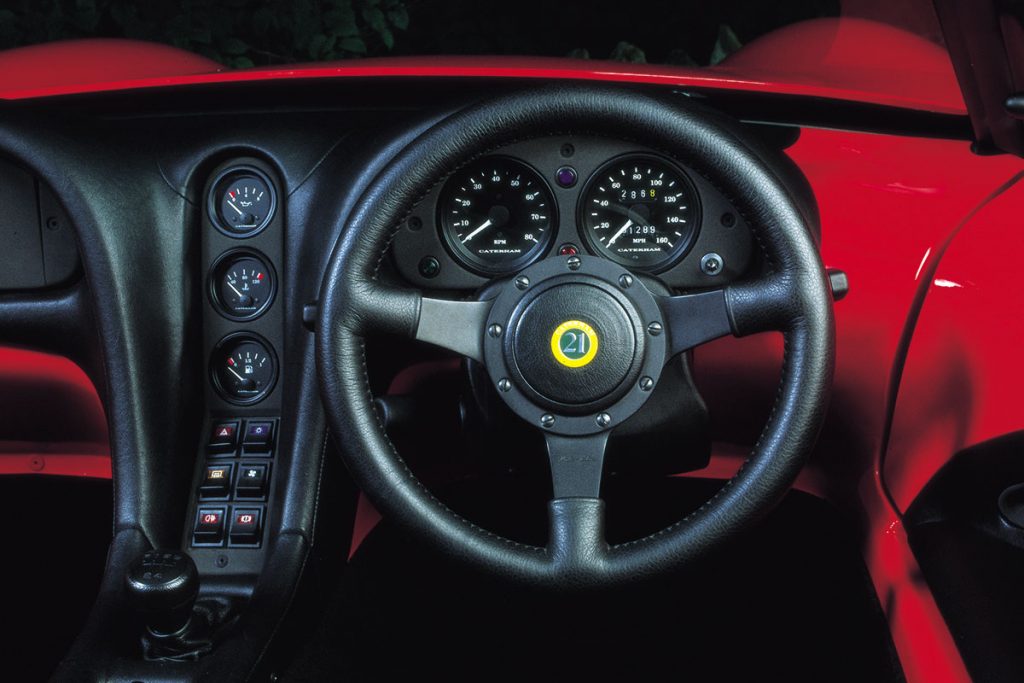You could be forgiven for thinking that Caterham‘s repertoire has only ever included the Seven, but for a short time Caterham did offer something different: a lightweight sports car that was intended to be just as much fun to drive but significantly more practical.
In the early 1990s the Seven was on a roll and Caterham owner Graham Nearn reckoned that expanding its portfolio could be only a good thing. Nearn had long wanted to produce a two-seater convertible inspired by the wind-cheating Lotus 11, and because the new sportster was set to launch in Caterham’s 21st year as a car maker, the new arrival would be known as the 21.

To keep the development costs down the 21 was based on the Seven’s chassis, which meant the wheelbase and rear track were carried over, as were the engine, gearbox and rear axle. To improve the handling and add footwell space the front track was widened by three inches, and the suspension was recalibrated for the extra weight.
In typical Caterham fashion the 21 put dynamics above practicality. The high and wide sills dictated by the chassis meant there were small doors, so getting in and out was for contortionists only. To reduce weight and complexity the windows had to be screwed into place rather than them winding up and down.
Unveiled at the 1994 Birmingham Motor Show with a polished aluminium bodyshell, the Caterham 21 was priced at £18,750 in kit form (known as Clubman). A Vauxhall-derived JPE 2.0-litre engine was fitted, with a six-speed manual gearbox, but all production cars would feature Rover K-Series power and a five-speed transmission. As standard there was a 113bhp 1.6-litre engine, but for those who wanted more power there were 131bhp 1.6 Supersport, 122bhp 1.8 or 138bhp 1.8 Supersport options. The ultimate edition was the 190bhp 1.8 Supersport R, just two of which were made.

The press loved the 21’s driving experience and its snug twin-cockpit cabin. With a 658kg kerb weight the 21 offered scintillating performance with superb agility. Even in entry-level 1.6-litre form the 21 could crack 0-60mph in just 6.4 seconds on the way to a 118mph top speed. The steering, brakes, gearchange and throttle response were all sublime and the ride was much more forgiving than a Seven’s. But dark clouds were gathering on the horizon…
Two years after the 21 was unveiled, Lotus launched the Elise which had been developed with a far bigger budget. The result was a less compromised car that was even better to drive. Suddenly the Caterham was no longer the best in its class and by 1999 the final 21 had left the factory, although the car was theoretically available after this.
At launch Caterham had talked of up to 250 copies of the 21 being built each year, but in the end just 49 were made, two with aluminium bodies and the rest in fibreglass. An onslaught of affordable sports cars such as the MGF, BMW Z3 and Honda S2000 meant the Caterham 21 didn’t really stand a chance, despite its brilliance.
Also read
Caterham Cars sold to Japanese importer
Driving seven of Britain’s best roads in a Caterham 7 is the ultimate father-son roadtrip
Sweet 1600: Caterham Super Seven review












It is a brilliant car, and such an achievement for a tiny company.